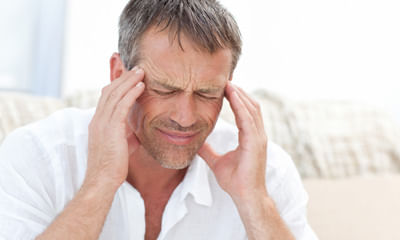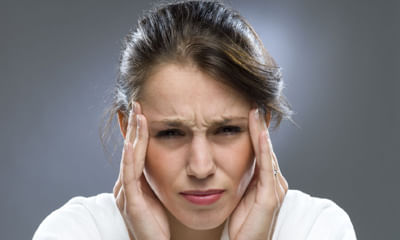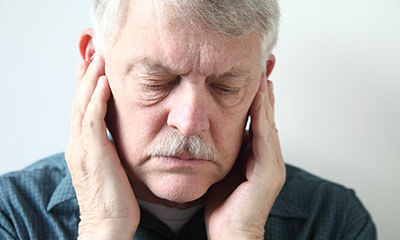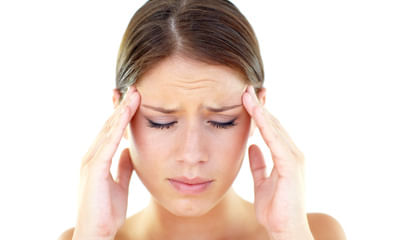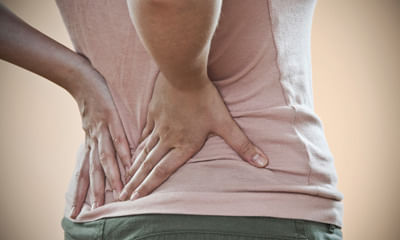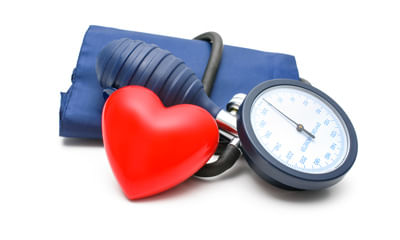Tension Headache Symptoms
Sir/madam, I am a 23 year old female of body weight 52 kg. From last 2 years I am having frequent headaches and dizzines ...
Ask Free Question
I empathize with the difficulties you've been enduring due to persistent headaches and dizziness over the last two years. These symptoms have evidently taken a toll on your daily life, and addressing them requires a comprehensive and thoughtful approach. Here are some essential aspects to delve into further: consult a healthcare professional: schedule an appointment with a doctor, preferably a neurophysician or an internal medicine specialist, to discuss your symptoms in detail. Comprehensive examination: a healthcare professional will likely perform a comprehensive examination, including a detailed medical history, physical examination, and may order relevant tests or imaging studies. Explore potential causes: chronic headaches and dizziness can have various causes, including migraines, tension headaches, vestibular disorders, or other underlying medical conditions. Identifying the root cause is crucial for appropriate management. Medication review: if you're taking any medications, including homeopathic remedies, inform your healthcare provider. Some medications may contribute to or interact with your symptoms. Lifestyle factors: discuss your lifestyle, including sleep patterns, stress levels, and dietary habits, as these can play a role in headaches and dizziness. Consider mental health: emotional well-being is integral to overall health. If stress, anxiety, or other mental health factors are contributing to your symptoms, your healthcare provider may recommend appropriate interventions. It's essential to convey the severity of your symptoms, the impact on your daily life, and any associated factors. A thorough assessment will guide the development of an appropriate treatment plan, which may include medications, lifestyle adjustments, or other interventions. Please seek prompt medical attention to address your concerns and find a suitable solution. If you need additional guidance, consider sending more details in a private consultation for more personalized advice.
My left head feels very heavy and tight from front to back from 27 days I am taking pregabalin 75 mg but no relief till ...
Ask Free Question
I can offer some general information that might be helpful. It's essential to consult with a healthcare professional, preferably a neurologist, about your persistent symptoms. The heaviness and tightness you're experiencing in your left head for an extended period could have various causes, and it's important to have a thorough evaluation to determine the underlying issue. Here are some possibilities to consider: tension headaches: tension headaches can cause a sensation of tightness or pressure in the head. If you've been under stress or have a history of anxiety or depression, tension headaches may be more likely. Migraines: migraines can also cause head discomfort and can vary in their symptoms. They often involve throbbing pain on one side of the head and may be accompanied by other symptoms like nausea, light sensitivity, or sound sensitivity. Medication side effects: pregabalin, like any medication, can have side effects. It's possible that your symptoms are related to the medication. It's important to discuss this with your healthcare provider, and they may need to adjust your medication or consider alternative treatments. Other neurological conditions: there are various neurological conditions that can cause head discomfort and require further evaluation by a neurologist. These could include issues with blood vessels, nerves, or other structures in the head. Given that you've been experiencing these symptoms for an extended period and are already on medication for depression, it's crucial to consult with a healthcare professional who can conduct a comprehensive evaluation and determine the exact cause of your symptoms. They may recommend additional tests, such as imaging studies or blood tests, to rule out any underlying medical conditions. It's essential to be open and honest with your healthcare provider about your symptoms, their duration, and any potential side effects of your current medications. They can provide the most appropriate guidance and treatment options based on a thorough assessment of your condition.
Hii I am a ca, when I was in 3rd class I used to take paracetamol for headache. When I was becoming somewhat older, para ...
Ask Free Question
Follow these herbal combinations for complete cure brahmi vati 1 tablet twice a day chandanadi avleh 10 gm twice a day.
Jaw blocking only 2 fingers space is left how to get the original size or some exercise to get rid from this. ...
Ask Free Question
I'm sorry to hear that you're experiencing jaw locking. This can be a very painful and frustrating symptom. Unfortunately, I cannot provide medical advice or diagnose your condition. It is important to see a doctor or dentist to get a proper diagnosis and treatment plan. However, I can provide you with some general information about jaw locking, which may be helpful: causes: jaw locking can be caused by a variety of factors, including temporomandibular joint disorder (tmj), arthritis, muscle tension, or trauma. Symptoms: in addition to jaw locking, you may also experience pain, clicking or popping sounds in the jaw, difficulty chewing, and headaches. Treatment: treatment for jaw locking will vary depending on the underlying cause. In some cases, home remedies such as rest, ice, and over-the-counter pain relievers may be helpful. In other cases, more specialized treatment such as physical therapy, medication, or surgery may be necessary. Here are some exercises that may help to improve jaw mobility, but please be sure to consult with a doctor or dentist before trying them: gentle jaw stretches: open your mouth as wide as you comfortably can and hold for a few seconds. Repeat 10 times. Side-to-side jaw movements: move your jaw slowly from side to side, opening and closing your mouth slightly with each movement. Repeat 10 times on each side. Tongue exercises: stick your tongue out as far as you can and hold for a few seconds. Repeat 10 times. It is important to note that these exercises should not be painful. If you experience any pain, stop immediately and consult with a doctor or dentist. I hope this information is helpful. Please let me know if you have any other questions. Image of sidetoside jaw movements exerciseopens in a new window www.jawflex.com sidetoside jaw movements exercise.
I am 20 year old boy I have backache, headache, fatigue since 3 months. I have water brash problem since 4 months and my ...
Ask Free Question
Kindly do these exercises. Back pain is described as acute or chronic based on how long you’ve had it. Acute pain lasts days to weeks, subacute pain lasts six weeks to three months, and chronic pain lasts longer than three months. Things that make it better or worse back pain may get worse with movement or if you sit or stand for a long time. It may get better if you switch positions or walk around. Accompanying symptoms other symptoms you may experience with back pain include: •the painful spot looking swollen and feeling tender to the touch •a muscle spasm in the painful area •numbness or weakness in one or both of your legs (if the pain is due to a nerve issue) if you find you have back pain and can’t hold your urine or bowel movements, something is pressing on your spinal nerves, and you should be evaluated immediately. This condition, called cauda equina syndrome, can cause severe long-term damage to your spinal nerves if not treated right away. 6 imbalances that cause pain—and how to fix them "pain is a medical condition and a medical issue, says brett jones, owner of applied strength in pittsburgh who is certified for the functional movement screen, a system of tests and cor rective exercise strategies. "it's a warning sign. The pain is there to tell you something's wrong. And that warning sign could be more serious than "you're going too hard. Jones and the other coaches consulted for this piece all had a horror story to tell-when pain in a client meant a more serious condition such as a nerve issue, thyroid issue, or even cancer. The point: if you experience regular pain while exercising-or when you're not-go to the doctor. If you've been cleared by a doc and you're still feeling discomfort, try these simple tests to see what's truly causing the pain-it could be related to an imbalance in a completely different part of your body. The good news: with these drills, stretches, and corrective exercises, you may be able to fix them-no doctors necessary. 1. Standing extension how it helps – this standing extension helps reverse what you do on a daily basis (hunching)… since most bulging discs and herniated discs are caused by poor posture and repeated flexion of the spine (esp bending fwd in bad posture), this stretch helps push the disc back to neutral position. How to do it – begin this exercise by standing up with good posture. Now take both hands and place them on both sides of your lower back. Now with the help of your hands push your pelvis forward and extend your spine back. Follow the extension with your neck so that you end up facing the ceiling. – start with 10 repetitions and do 2-3 sets. – this one is particularly great to do when you need a break from sitting at your desk. ** this should not cause any pain. If you feel pain during it is not a good one for you. In that case, stop and try some of the other exercises below instead. 2. Half cobra pose (prone lumbar extension) how it helps – the half cobra stretch helps to push the disc material back towards the center of the inter-vertebral disc to allow for improved healing. The goal of repeated lower back extension is the “centralization of symptoms”, which basically means pain that travels down the affected leg to the foot should come back up closer to the low back – which will in turn alleviate the pain. How to do it – begin this exercise by lying on your stomach (prone position) and slowly prop yourself up on your elbows while keeping your hips in contact with the floor. – hold the prop-up position for 10-15 seconds before returning to the prone position (lying face down). – gradually increase to holding the end position for 30 seconds. Aim for 10 repetitions of this stretch. ** initially, you may not be able to tolerate this position very well, so make sure you start slowly and carefully. If there’s any pain, try a different exercise instead. 3. Full cobra pose (advanced extension) how it helps – this stretch is based on the same principle as the half cobra pose above. This advanced extension helps to push disc material back towards the center of the intervertebral disc, with the goal of alleviating pain symptoms. How to do it – once you’ve mastered the half cobra pose, you can increase the difficulty by moving to the advanced version of this stretch. Begin this exercise by lying on your stomach in the prone position (lying facing down) and slowly press up on your hands while keeping your pelvis in contact with the floor and lower back relaxed. – hold the prop-up position for 10 seconds. Aim for 10 repetitions of this stretch. – eventually try to hold this pose for longer if it feels good (20-30 seconds). ** if you feel pain during this exercise, it is not a good one for you. In that case, stop and try some of the other exercises instead. 4. Cat-cow how it helps – this is one of the most popular herniated disc exercises. By combining two yoga poses, the cat-cow stretch can help to relieve pressure on the herniated disc by opening the intervertebral disc space. It also improves mobility of the spine, which may help to relieve disc herniation pain and speed recovery. How to do it – begin this stretch on your hands and knees. Inhale and let your stomach “drop” towards the floor as you look up towards the ceiling. – follow this by exhaling and slowly rounding your spine while pressing into the floor with your hands and slightly curving your neck to look at your feet. – aim for 10 repetitions of this stretch and do 2-3 sets. How it helps – this exercise will help strengthen and stabilize your lower back and deep spine muscles. This will help you to maintain a good posture and avoid future episodes of herniated discs. How to do it: – begin on your hands and knees with your hands positioned under your shoulders and knees positioned under your hips. – raise your left arm and reach it forwards until it is aligned with your torso; at the same time, kick your right leg backwards until is it aligned with your torso. – hold this position for 2-3 seconds before slowly returning to the starting position. – repeat with your right arm and left leg. – alternate sides for 10 repetitions and do 2-3 sets. ** ensure that your head, neck, and back maintain a neutral alignment to minimize stress on your neck. 5.plank: how it helps – just like the bird dog, this “core” exercise will help bring your pelvis into right position by strengthening the deep spinal muscles and glutes (butt muscles). How to do it – begin lying on your stomach with your forearms against the mat. – engage your core and lift your body so that you are resting on your forearms and toes. – start with 10 second holds and work up to 30 second holds, do 2-3 sets. ** ensure to keep your back straight throughout the entire exercise – spine in neutral position. Thoracic expansion if you’re using a chair, sit facing forward and allow your upper body to fall over the back of the chair. Extend your arms above your head for a deeper stretch. Hold either position for 10 seconds. 1. Plank the world record for the longest plank is 8 hours. Luckily, you don’t need to hold it that long for the exercise to have an effect! in fact. You can hold it for 10-15 seconds. • the plank is similar to a push-up position, but instead of resting on your hands, you rest on your elbows and bring them directly underneath your chest. • after kneeling, lean forward and place your elbows on the ground directly below your shoulders. • lift your knees off of the floor and push your feet back. Ensure your back is straight and keep your neck aligned with the rest of your spine. • hold the position and tighten your core muscles for the desired time. 2. Side plank just like the original plank, but only balancing on one side. • lie on the floor on your side, facing sideways with your feet together. • lift up your body until you are supporting yourself with your elbow, directly below your shoulder. • raise your hips until your body is in a straight line and tighten your core muscles; your body should create a slant from your shoulders to your feet. • hold this position without dropping your hips. • repeat on the opposite side. 3. Pelvic tilt with exercise ball sit on a ball that allows your legs to be at a 90-degree angle with your feet flat on the floor. • keep your shoulders back and spine straight. • tilt your hips forward and flex your abdominals tight. • tilt your hips backward as you stick your tailbone out. • move back and forth slowly, keeping your shoulders back. • repeat 10 times for 3 sets. 4. Superman lie on your stomach, face down, with your arms out in front of you. • lift arms, legs, and chest off the floor simultaneously while keeping your hips grounded. • hold for a minimum of two seconds. • lower back down slowly. • repeat 10 times for 3 sets. 6. Crunches lie flat on your back, placing your feet flat on the floor with your legs bent. • fold your arms across your chest and lift your torso up until your head, neck, and torso are off the ground. • hold for a moment before lowering back down. • repeat. 6. Quadruped arm opposite leg raises • kneel on the floor, lean forward, and place your hands palm-down on the floor. • make sure your back is straight, your knees are below your hips, and that your palms are directly below your shoulders. • raise one arm as you raise the opposite leg until both are aligned straight out from your body, parallel to your spine. • slowly lower both your arm and leg until you are back in the starting position. • switch arm and leg, and repeat. 7. Dead bug lie flat on the floor on your back. • lift your arms straight up from your body, reaching through the air. • raise one leg until it is at a 90-degree angle from your body. • slowly lower until it is in the starting position. • switch legs and repeat. 8. Hip bridge lie on your back with your knees bent and raised, your feet flat on the floor, and your arms at your sides. • keep your feet hip-distance apart and try to keep your leg in vertical alignment with your knee. • flex your glutes and push through your heels to raise your hips upward. Try to make a diagonal line from your shoulders to your knees. • hold for a short moment before lowering back down. • repeat 10 times for 3 sets. Upper back pain pushups this one may seem basic, but there’s no denying that pushups are one of the best ways to strengthen the pectoral muscles. These can be done on the knees or toes. If you’re not ready for full pushups, start with your hands resting on a solid surface higher than your feet — like a very sturdy coffee table or the edge of a couch, cushions removed, that’s pressed up against a wall — and start on the toes. Having your hands higher than your feet and your body at an angle can be a good way to start a pushup regimen. As you get stronger, you can begin to lower the angle of your body. This will help you transition to full pushups more easily than going from knees to toes. A full plank engages the muscles differently, even at an angle. When doing pushups, aim for 2 sets of 10 reps per day. 1.start in plank position with your hands under your shoulders and your core engaged. 2.as you lower, inhale. 3.as you engage your muscles to push yourself up, exhale. Keep your elbows hugging in close to your body. Keep your focus on slowly breathing as you do these, and on engaging the pectorals while keeping the core tight. Don’t just crank these out to get them done — this can compromise your form and do more harm than good. If the movement is really tough, break the sets into three or five to start, or find a higher point to begin after a week of exercise. If necessary, you can even stand and do pushups pushing against a wall. Chest fly for this exercise, you’ll need a bench or exercise ball as well as some dumbbells. If you don’t have weights, you can always use the old standby: a soup can in each hand. Just keep in mind that dumbbells are easier to hold and you can get more out of using them, as even 5-pound weights are heavier than your heaviest canned goods. 1.lie with your upper and middle back on a bench or ball, with your legs at a 90-degree angle. Hold a weight in each hand and extend your arms to the sky, elbows slightly bent. 2.as you inhale, lower your arms out wide, until your elbows are at shoulder height. 3.as you exhale, raise your hands until they meet above your chest again. 4.do 2 sets of 10. If that feels pretty easy, up it to 2 sets of 15 or increase the weight you’re using. Dumbbell row strengthening your back muscles is an important component of treating pectusexcavatum. The dumbbell row targets your lat muscles. The way it’s described below also strengthens your core, another important component of treating the condition. You’ll need some dumbbells to complete this move — err on the lighter side if you’ve never done a row before. 1.hold one dumbbell in each hand with your arms extended. Hinge at the hips until your upper body reaches a 45-degree angle. 2.keeping your neck in line with your spine and your gaze straight down, pull your elbows straight back and squeeze between your shoulder blades. 3.extend your arms back to the starting position. Complete 2 sets of 10. Dumbbell rear delt fly another move to strengthen your back, a dumbbell rear delt fly also focuses on the lats, as well as the rhomboids and the traps. Choose a light pair of dumbbells to complete this move and ensure that you’re pinching your shoulder blades together at the top to get the most out of it. 1.hold one dumbbell in each hand with your arms extended. Hinge at the hips until your upper body reaches a 45-degree angle and bring the dumbbells together. 2.keeping your spine and neck neutral, inhale and push the dumbbells out and up to the side until your arms are parallel to the floor. 3.exhale and return to the start in a slow and controlled motion. Complete 2 sets of 10. Exercise is a key component to treating pectusexcavatum. By strengthening your chest, back, and core muscles and stretching your chest cavity, you can combat the condition’s effects. Aim to complete these exercises several times a week to maximize results. For middle back pain side plank with rotation this exercise is an advanced version of the basic plank. It strengthens the arms, shoulders, and obliques by combining a side plank with arm movements. Lie on your right side with your right forearm below your shoulder. Extend your legs, left foot on top of right. Tighten your core. Lift your hips to form a straight line with your body. Raise your left arm straight up. Rotate your torso toward the floor and bring your left arm under your body. Rotate your torso and straighten your left arm to return to the starting position. Start with 1 set of 8–12 reps. Repeat on the other side. Bird dog with elbow to knee this variation on the basic bird dog incorporates fluid movement to engage your abs and back while improving core mobility. Start on all fours, hands below your shoulders and knees below your hips. Tighten your core. Lift and straighten your right leg to hip level. Simultaneously lift and extend your left arm to shoulder level, palm down. Bring your right knee and left elbow toward each other. Return to the starting position. Start with 1 set of 8–12 reps. Repeat on the other side bicycle crunch this classic exercise strengthens your abs by placing them under constant tension. Start on your back. Bend your knees and plant your feet on the floor at hip width. Line up your head and spine. Place yours behind your head, elbows pointing out to the sides. Tighten your core and move your shoulders back and down. Bend your right knee toward your chest and extend your left leg, lifting it a few inches off the floor. Lift your left shoulder and upper back, bringing your left elbow toward your right knee. Tap your left shoulder on the floor and simultaneously switch your legs. Continue alternating elbows and knees, starting with 1 set of12 reps.
Hello respected Dr. Sahib ji. Why headache with air. When contact body with cold air headache is more sometimes vomit. F ...
Ask Free Question
Hello! based on the symptoms you have described, it is possible that you may be experiencing a type of headache called a "sinus headache" or "migraine headache" triggered by exposure to cold air. This could be due to the sudden constriction of the blood vessels in your head that occurs when you are exposed to cold air, leading to pain and discomfort. Additionally, the cervical spine problem and neck nerve pressure you mentioned can also contribute to headaches, as the nerves in your neck are closely connected to the nerves in your head. Here are some general tips that may help alleviate your headache: 1. Avoid exposure to cold air: try to avoid going outside in cold weather, or wear a hat or scarf to cover your head and protect it from the cold. 2. Apply heat: applying a warm compress or taking a warm bath or shower can help relax the muscles in your head and neck and reduce pain. 3. Practice good posture: maintaining good posture throughout the day can help reduce pressure on your neck and spine, which can help alleviate headaches. 4. Consider over-the-counter pain relief medication: over-the-counter pain relief medications such as ibuprofen or acetaminophen can help reduce pain and discomfort associated with headaches. 5. Get enough rest: getting enough rest and sleep can help reduce stress and tension, which can contribute to headaches. If your headache persists or worsens, or if you experience other symptoms such as nausea, vomiting, or dizziness, it's important to seek medical advice from a healthcare provider. We can help determine the underlying cause of your headache and provide appropriate treatment.
What’s causes blood follow when when you sneeze whiles having a tension headache. ...
Ask Free Question
It's possible that the increased pressure from the tension headache could cause the blood vessels in your nose to burst when you sneeze, resulting in bleeding. Tension headaches are caused by muscle contractions in the head and neck, which can lead to a feeling of pressure or tightness in the head. When you sneeze, the sudden forceful expulsion of air from your nose and mouth can increase the pressure in the blood vessels in your head and neck. This increased pressure can cause the blood vessels in your nose to rupture, leading to bleeding. However, it's important to note that there could be other underlying factors causing the nosebleed, such as a nasal injury, sinus infection, or other medical condition. If you experience frequent nosebleeds or have concerns about your symptoms, it's important to seek medical advice from a healthcare provider.
Hello sir, I am preparing competitive exam but I have health issues due to 2015 accident. Problems headache, neck pain, ...
Ask Free Question
Kindly do exercises that are listed below 2. Standing extension how it helps – this standing extension helps reverse what you do on a daily basis (hunching)… since most bulging discs and herniated discs are caused by poor posture and repeated flexion of the spine (esp bending fwd in bad posture), this stretch helps push the disc back to neutral position. How to do it – begin this exercise by standing up with good posture. Now take both hands and place them on both sides of your lower back. Now with the help of your hands push your pelvis forward and extend your spine back. Follow the extension with your neck so that you end up facing the ceiling. – start with 10 repetitions and do 2-3 sets. – this one is particularly great to do when you need a break from sitting at your desk. ** this should not cause any pain. If you feel pain during it is not a good one for you. In that case, stop and try some of the other exercises below instead. 3. Half cobra pose (prone lumbar extension) how it helps – the half cobra stretch helps to push the disc material back towards the center of the inter-vertebral disc to allow for improved healing. The goal of repeated lower back extension is the “centralization of symptoms”, which basically means pain that travels down the affected leg to the foot should come back up closer to the low back – which will in turn alleviate the pain. How to do it – begin this exercise by lying on your stomach (prone position) and slowly prop yourself up on your elbows while keeping your hips in contact with the floor. – hold the prop-up position for 10-15 seconds before returning to the prone position (lying face down). – gradually increase to holding the end position for 30 seconds. Aim for 10 repetitions of this stretch. ** initially, you may not be able to tolerate this position very well, so make sure you start slowly and carefully. If there’s any pain, try a different exercise instead. 4. Full cobra pose (advanced extension) how it helps – this stretch is based on the same principle as the half cobra pose above. This advanced extension helps to push disc material back towards the center of the intervertebral disc, with the goal of alleviating pain symptoms. How to do it – once you’ve mastered the half cobra pose, you can increase the difficulty by moving to the advanced version of this stretch. Begin this exercise by lying on your stomach in the prone position (lying facing down) and slowly press up on your hands while keeping your pelvis in contact with the floor and lower back relaxed. – hold the prop-up position for 10 seconds. Aim for 10 repetitions of this stretch. – eventually try to hold this pose for longer if it feels good (20-30 seconds). ** if you feel pain during this exercise, it is not a good one for you. In that case, stop and try some of the other exercises instead. 5. Cat-cow how it helps – this is one of the most popular herniated disc exercises. By combining two yoga poses, the cat-cow stretch can help to relieve pressure on the herniated disc by opening the intervertebral disc space. It also improves mobility of the spine, which may help to relieve disc herniation pain and speed recovery. How to do it – begin this stretch on your hands and knees. Inhale and let your stomach “drop” towards the floor as you look up towards the ceiling. – follow this by exhaling and slowly rounding your spine while pressing into the floor with your hands and slightly curving your neck to look at your feet. – aim for 10 repetitions of this stretch and do 2-3 sets. How it helps – this exercise will help strengthen and stabilize your lower back and deep spine muscles. This will help you to maintain a good posture and avoid future episodes of herniated discs. How to do it: – begin on your hands and knees with your hands positioned under your shoulders and knees positioned under your hips. – raise your left arm and reach it forwards until it is aligned with your torso; at the same time, kick your right leg backwards until is it aligned with your torso. – hold this position for 2-3 seconds before slowly returning to the starting position. – repeat with your right arm and left leg. – alternate sides for 10 repetitions and do 2-3 sets. ** ensure that your head, neck, and back maintain a neutral alignment to minimize stress on your neck. Plank: how it helps – just like the bird dog, this “core” exercise will help bring your pelvis into right position by strengthening the deep spinal muscles and glutes (butt muscles). How to do it – begin lying on your stomach with your forearms against the mat. – engage your core and lift your body so that you are resting on your forearms and toes. – start with 10 second holds and work up to 30 second holds, do 2-3 sets. ** ensure to keep your back straight throughout the entire exercise – spine in neutral position. Thoracic expansion if you’re using a chair, sit facing forward and allow your upper body to fall over the back of the chair. Extend your arms above your head for a deeper stretch. Hold either position for 10 seconds and release. Repeat 3 times. Can tight neck muscles cause vertigo. Your inner ear might not be the culprit. Vertigo is the technical name for dizziness, especially the type where it feels like the room, or the patient, is spinning. Theneck structures most likely to cause vertigo are a muscle called the sternocleidomastoid (scm for short) and the uppermost joints of the spine shin pain 1.Keep your legs elevated. 2.Use ice packs to reduce swelling. Shop for cold compresses. 3.Take an over-the-counter anti-inflammatory, such as ibuprofen (advil) or naproxen sodium (aleve). Shop for ibuprofen and naproxen sodium. 4.Wear elastic compression bandages. 5.Use a foam roller to massage your shins. Finger stretch 1.Place your hand palm-down on a table or other flat surface. 2.Gently straighten your fingers as flat as you can against the surface without forcing your joints. 3.Hold for 30 to 60 seconds and then release. 4.Repeat at least four times with each hand. Scapular dyskinesis technique #1: overhead wall rollout this is a great exercise for retraining scapulohumeral rhythm and activating the serratus anterior as well as integrating shoulder flexion with core stability. 1.Stand leaning against a wall with an ab-wheel in your hands 2.Protract your scapulae 3.Slowly roll the ab-wheel up the wall and ensure you’re shrugging your shoulders to elevate your scapulae as your arms rise up while keeping tension in your core to avoid lumbar extension 4.Roll back down slowly and with control and return to the initial position. 5.Breathe naturally throughout the movement scapular dyskinesis technique #2: supine serratus activator this activation technique will help reset your scapulae in the correct position, while reactivating the inhibited posterior muscles of your shoulder. 1.Lay on your back with legs bent, feet flat and arms by your side 2.Bend your elbows so your fingers are pointing up towards the sky with palms facing together 3.Drive your elbows into the ground to activate the lats and posterior deltoids without trying to pinch your scapulae together 4.Picture your chest opening and the medial border of the scapulae moving up into your body and hold for 5 seconds 5.Relax briefly and repeat.
From 4-5 year I have 24 hour full body pain and fatigue and all tests are normal. 4-5 months ago aiims doctor diagnosed ...
Ask Free Question
Also called: fibrositis self-carephysical exercise aerobic activity for 20–30 minutes 5 days a week improves cardiovascular health. If injured, pursuing an activity that avoids the injured muscle group or joint can help maintain physical function while recovering. Stress management pursuing an enjoyable activity or verbalising frustration to reduce stress and improve mental health. Relaxation techniques deep breathing, meditation, yoga, rhythmic exercise and other activities that reduce symptoms of stress hydrotherapy using water to relieve pain, treat diseases and maintain health. For example, mineral baths and hot tubs. Stretching stretching exercises can improve flexibility and improve physical function. Graded exercise therapy physical exercise that starts very slowly and gradually increases over time. Massage relaxes tense muscles. Heat therapy using heat is an excellent way to help relax muscles and encourage blood flow to areas that are particularly painful. This can easily be done at home using dry or damp hot towels. Simply hold the towel against the affected area until you feel relief. Ultrasound an ultrasound uses sound waves to produce heat which improves blood flow to deep muscle tissue. It can be used to relieve pain, stiffness, spasms, and inflammation widespread muscle pain and tenderness. Symptoms requires a medical diagnosis widespread muscle pain and tenderness are the most common symptoms. People may experience: pain areas: in the muscles, abdomen, back, or neck pain types: can be chronic, diffuse, sharp, or severe pain circumstances: can occur at night gastrointestinal: constipation, nausea, or passing excessive amounts of gas whole body: fatigue, feeling tired, or malaise muscular: muscle tenderness, delayed onset muscle soreness, or muscle spasms sensory: pins and needles, sensitivity to cold, or sensitivity to pain mood: anxiety, mood swings, or nervousness sleep: difficulty falling asleep or sleep disturbances cognitive: forgetfulness or lack of concentration hand: sensation of coldness or tingling also common: depression, flare, headache, irritability, joint stiffness, painful menstruation, or tingling feet treatment consists of self care and therapy medication, talk therapy and stress reduction may help in controlling the symptoms. Self-carephysical exercise aerobic activity for 20–30 minutes 5 days a week improves cardiovascular health. If injured, pursuing an activity that avoids the injured muscle group or joint can help maintain physical function while recovering. Stress management pursuing an enjoyable activity or verbalising frustration to reduce stress and improve mental health. Relaxation techniques deep breathing, meditation, yoga, rhythmic exercise and other activities that reduce symptoms of stress therapies support group a forum for counseling and sharing experiences among people with a similar condition or goal, such as depression or weight loss. Biofeedback controlling the body's heartbeat, brainwaves, breathing and blood pressure by monitoring them with sensors. Cognitive behavioral therapy a talk therapy focused on modifying negative thoughts, behaviours and emotional responses associated with psychological distress. Hydrotherapy using water to relieve pain, treat diseases and maintain health. For example, mineral baths and hot tubs. Chiropractic treatment techniques adjusting the spine and massaging the back muscles to relieve pain. Stretching stretching exercises can improve flexibility and improve physical function. Graded exercise therapy physical exercise that starts very slowly and gradually increases over time. Massage relaxes tense muscles. Acupuncture insertion of needles into specific points on the body to relieve pain and treat other conditions. A form of traditional chinese medicine. Medications selective serotonin reuptake inhibitor (ssri) eases symptoms of depressed mood and anxiety. Analgesic relieves pain. Nonsteroidal anti-inflammatory drug relieves pain, decreases inflammation and reduces fever. Nerve pain medication blocks pain caused by damaged nerves. Muscle relaxant reduces muscle tension and helps relieve muscle pain and discomfort. Fibromyalgia medications can help reduce the pain of fibromyalgia and improve sleep. Common choices include: •pain relievers. Over-the-counter pain relievers such as acetaminophen (tylenol, others), ibuprofen (advil, motrin ib, others) or naproxen sodium (aleve, others) may be helpful. Your doctor might suggest a prescription pain reliever such as tramadol (ultram). Narcotics are not advised, because they can lead to dependence and may even worsen the pain over time. •antidepressants. Duloxetine (cymbalta) and milnacipran (savella) may help ease the pain and fatigue associated with fibromyalgia. Your doctor may prescribe amitriptyline or the muscle relaxant cyclobenzaprine to help promote sleep. •anti-seizure drugs. Medications designed to treat epilepsy are often useful in reducing certain types of pain. Gabapentin (neurontin) is sometimes helpful in reducing fibromyalgia symptoms, while pregabalin (lyrica) was the first drug approved by the food and drug administration to treat fibromyalgia. Therapy a variety of different therapies can help reduce the effect that fibromyalgia has on your body and your life. Examples include: •physical therapy. A physical therapist can teach you exercises that will improve your strength, flexibility and stamina. Water-based exercises might be particularly helpful. •occupational therapy. An occupational therapist can help you make adjustments to your work area or the way you perform certain tasks that will cause less stress on your body.
I believe I have sees, it got really bad so I searched up the symptoms and came across this (sees). Is there any kind of ...
Ask Free Question
I am sorry to hear about your concern but will be happy to assist you. This pressure will often be due to simple headaches or sinus conditions, which are easy to deal with and unlikely to cause complications. Let's connect over a call so that we can discuss your concern in details and make a treatment plan for you.


